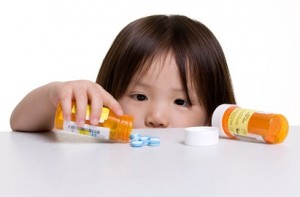The number of children who end up in the emergency room due to accidental medication poisoning is declining, according to a new government study.
Approximately 640,000 children age 5 and younger were treated in emergency rooms for ingesting drugs between 2004 and 2013. Of these children, 70 percent were 1- or 2-year-olds, the researchers from the Centers for Disease Control and Prevention report. Almost one-fifth were hospitalized.
During the early 2000s, the number of children’s ER visits increased, peaking at about 76,000 in 2010. The visits decreased to about 59,000 visits in 2013.
“We think these declines are real,” said lead researcher Maribeth Lovegrove. She noted that there are still too many ER visits for young children due to drug poisoning. “Innovative approaches, such as improved safety packaging and targeted educational messages, may be needed to continue or even accelerate this decline,” she told HealthDay.
Most of the ER visits between 2010 and 2013 involved the ingestion of one medicine. Almost half involved prescription pills, tablets or capsules. Lovegrove noted that more than 260 different prescription pills, most of them intended for adults, were involved in ER visits for unsupervised exposures in young children. The most common were narcotics, such as buprenorphine, oxycodone or hydrocodone, followed by benzodiazepines such as clonazepam (Klonopin) and alprazolam (Xanax).
Almost one-quarter of visits involved over-the-counter pills, tablets or capsules. An additional 12 percent involved an over-the-counter liquid medicine, such as cough syrup.
The findings appear in Pediatrics.
Lovegrove advises parents and caregivers to keep all medicines in a safe location that is too high for young children to reach or see. Always relock the safety cap on a medicine bottle, and return all medicines to the safe storage location after each use, she said.
Published
September 2015
 Get Support
Get Support

